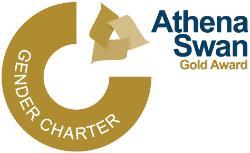Improving the experience of Black, Asian and minority ethnic students in higher education: a conference report
Published: 19 August 2021
IHW's ethnicity champion Sarah Amele shares key messages from a recent conference hosted by Government Events, examining the ways in which higher institutions can and must work to improve the experience of this group of students and address the degree awarding gap
IHW's ethnicity champion Sarah Amele shares key messages from a recent conference hosted by Government Events, which examined the ways in which higher education institutions can and must work to improve the experience of Black, Asian and minority ethnic students and address the degree awarding gap.

Improving outcomes for BAME Students in Higher Education 2021 (30 June 2021)
This was a one-day event with presentations from a number of UK universities including University of Brighton, City University of London, Queen Mary University of London, University of Wolverhampton, University of Bristol, De Montford University, Canterbury Christ Church University, University of Portsmouth, and also a presentation from AdvanceHE on the Race Equality Charter.
According to the Higher Education Statistics Agency (HESA), 80.9% of White students were awarded a good degree in 2018, compared to only 67.7% of Black, Asian, and minority ethnic students. However, this gap varies greatly depending on ethnicity, with the most pronounced gap between Black and White students. HESA also found that <1% of professors at UK universities identified as Black. According to Universities UK, in 2020, racial harassment was stated as the reason why 1 in 20 students left their course and 3 in 20 members of staff had left their job. Also, a 2018 report by The Independent showed that Black students were 21 times more likely to have their university application investigated than their white peers. These disturbing statistics highlight the need for substantial improvements across UK universities to improve the experience and retention of BAME students, and to close the awarding gap.
The majority of presenters noted that the term "BAME" is problematic as it implies there is a homogeneous Black, Asian, and minority ethnic experience. They also noted the term attainment gap (which refers to the difference in the proportion of student from one group receiving a first/2:1 compared with another group) is not appropriate as it assumes there is a deficit with the student. The term awarding gap was used instead, as it more accurately reflects the structural inequality faced by Black, Asian, and minority ethnic students. It is also important to be mindful that students may be facing different intersecting barriers, and to therefore adopt an intersectional approach when working to improve outcomes for Black, Asian, and minority ethnic students.
There were a number of case studies from different universities presented throughout the day, describing steps they had taken to improve certain aspects of the Black, Asian, and minority ethnic student experience, such as closing the degree awarding gap, increase feelings of belonging, and provide better career support. They highlighted the challenges they faced, but also showcased the positive impact of these initiatives. It was great to the hear about how these initiatives impacted Black, Asian, and minority ethnic outcomes, with some universities able to reduce the awarding gap, half the withdrawal rate of Black students, improve the culture, increase reporting of racial harassment, and improve the progression of Black, Asian, and minority ethnic students to high skilled roles after graduation. There are things we can all do to improve the experience and outcomes of Black, Asian, and minority ethnic students, below is a list of some of the initiatives discussed during the conference that had a positive impact on Black, Asian, and minority ethnic students:
- Create a culture that celebrates diversity – take steps to embed these values across staff and student communities, to promote a sense of belonging in which everyone is heard and respected.
- Decolonise the curriculum – develop a curriculum that is inclusive and reflective of the staff and student body.
- Take a stand against racism – this should be led by senior staff and statements should be followed by actions that are embedded into the system, otherwise they come across as tokenistic. Individuals should also take action to prevent racial discrimination and educate themselves and others on race, racism, power, and privilege.
- Targeted anti-racist education for staff, students and external stakeholders – create informal, accessible spaces for white allies to learn.
- Support students into graduate employment – increase direct experience with employers, work with external stakeholders and the community, take an asset-based approach vs student deficit model.
- Create a mentoring program for Black, Asian, and minority ethnic students.
Sarah Amele
Institute of Health and Wellbeing Ethnicity Champion
Understanding racism, transforming university cultures (UofG report)
First published: 19 August 2021
<< August 2021


